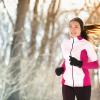There are many elements of traveling that can put a strain on good health. Long hours of sitting, fast food, different time zones, and exposure to unusual microbes are all new stresses for your body. Is it possible to enjoy the time away and return home healthy? Careful preparation will greatly increase your odds of staying well.
I have traveled thousands of miles by many different modes of transportation. My companions have included, at various times, a baby, child, teen, adult, a dog, and two guinea pigs. Along the way, I have picked up a few tricks to stay healthy, happy, and in the moment, both during the journey and at the destination!
Staying healthy on a plane
Although flying is probably the fastest way to get to your destination, complications like delays, long lines, and even longer times sitting can wreak havoc on the experience. However, with a little pre-planning both you and your family can make the most out of any situation with smiles intact!
Stay hydrated!
Always bring an empty reusable water bottle through customs and then fill it once you are waved through, as rules prohibit beverages being brought through security. Most airports have filtered water areas as well!
Stay full!
While some flights offer complimentary snacks, many now charge for that luxury. Surprisingly, most airlines allow you to bring non-perishable food on your flight, and some even permit fresh foods! If you can, avoid bringing nuts and nut products on the plane in consideration of those with serious nut allergies.
Stay busy!
Airports are usually full of interesting things to look at, making a walk much more enjoyable than sitting and waiting at the gate. Store your bags in a locker or kiosk to go hands (and stress!) free. Most airports have a play area for kids, and some even have gyms where you can buy a day pass and do a workout. Airport lounge facilities are also worth considering if you have a long wait for boarding.
Exercising onboard the plane is a little more challenging. It can help to have an aisle seat and walk every 30 to 60 minutes between cart service. If it’s late at night, or you’re sitting at the back, you may be able to sneak in a few lunges or squats near your seat as well. Another advantage to staying well-hydrated is that you need to use the washroom regularly, which is a great excuse to walk the aisle! It can also help circulation to frequently move your feet and legs while seated.
Stay comfy!
A light pillow and blanket that can easily be tossed into your purse will keep you (or your little ones) cozy and warm! Bring some DIY wipes, ear plugs, and an eye mask, as well as an extra set of “just in case” clothes for both you and your family members are musts. A small spray bottle of natural hand sanitizer, both to disinfect seat arm rests and tray tables and clean off any toys that fall on the floor, is great for peace of mind.
Stay amused!
Maintaining sanity on a long flight means ensuring your smallest travelers have toys and activities to keep them entertained and calm. But choose wisely! I have made toy blunders like the small ball which entertained the whole cabin while passengers scrambled to retrieve it, and the sticky, jelly-like “water worm” which fell under the seat and reemerged as a new furry toy complete with dust, hair (not ours!), and cracker crumbs.
Stay safe!
Health insurance isn't needed if traveling in Canada, since our provincial health care is transferable, but I do suggest picking up insurance if heading out of the country. US citizens should consult with their individual insurance companies about coverage. Check the fine print for pre-existing conditions that may not be covered, such as pregnancy and chronic disease. Before travelling, do your homework to see what diseases are common in the area you’re visiting and if any preventative measures are necessary. Research the safety of the food and water in the area to make sure you know what to expect.
In good health kit
- Probiotics to help keep beneficial gut bacteria healthy and deal with digestive upset from changes in food and water. Tip: try at home first to ensure you’ve got the right probiotic for the job.
- Greens powder to boost those meals that may be a little lacking in vegetables
- A gentle laxative, such as psyllium husk, works for both constipation and diarrhea.
- Vitamin C and zinc lozenges to combat signs of a cold.
- Baking soda works great on insect bites when mixed with water!
Staying healthy on a train
Train travel requires different preparation than plane as this mode is truly about the journey, especially if you’re going a long distance and travelling sleeper class. We took the heritage long-distance train from Saskatoon to Toronto and it was a fabulous way to relax and connect. Without the advantage of internet or cell service on most of the Via corridor (there are exceptions near major cities), our choices were to eat, read, play games, listen to music, watch the scenery, or chat. That’s what the adventure of train travel is all about!
Sleep well!
Bring ear plugs. Trains rattle and screech and if you’re a light sleeper, you may find this disturbs your slumber. On the flip side, that rattling does feel very much like being rocked to sleep! Another tip for ensuring good sleep is to bring duct tape and some string to temporarily tape down chains or blinds that are bouncing off the steel car as the train jostles back and forth.
Hit the sack hack!
A handful of raw pumpkin seeds or a cup of calming chamomile tea about an hour before bed can combat insomnia for both you and the kids! Studies show that pumpkin seeds reduce cortisol levels and can help prevent waking during the night.
Move well!
Trains have many long corridors through the cars that are perfect for meandering down. It might be a bit challenging if you have poor balance, but it’s never dull! Keep in mind, in many cases there isn’t much offered at the train stations you stop at. On our trip the only station of note was in Winnipeg, where we arrived at 1 a.m. After we admired the fresco on the ceiling in the station there was really nothing else to do and when we tried to re-board the train we were not allowed on until the new passengers boarded, so we had to wander around the station in our pajamas for an hour or so!
Eat well!
Before you embark, do your homework and check out the train line’s options, especially if you have any dietary restrictions. If in doubt, make sure to pack non-perishable snacks that the whole family enjoys!

Homeopathic Helpers
Add a few homeopathic extras to your first aid kit to help take the pain out of any journey!
Topicals
- Arnica creme or gel for pain and inflammation. Great for bruises, muscle strains and sprains.
- Calendula cream for burns, itches, irritations, and inflammation.
Orals
- Arnica Montana 30 CH for shock and injuries such as a strains, sprains, bruises, or cuts.
- Ledum Palustre 30 CH for insect bites, black eyes, or puncture wounds.
- Metal Album 30 CH for anxiety, diarrhea, and food poisoning.
- Ginger for settling upset tummies and motion sickness.
Staying healthy in the car
When we moved from Saskatchewan to Ontario we chose to go by open road to accommodate my daughter’s pet guinea pigs. As the sole driver, I needed to consider the distance I would be driving each day. And since we wanted to take advantage of glorious Canadian scenery I chose a northern route, which meant we would be driving along some of the loneliest sections of country in Canada, without ready access to urban services.
Be safe!
Before we set out, I considered worst-case scenarios ranging from a flat tire, to collisions with moose, and minor ailments such as allergies, inflammation, or headaches. I knew we would be dodging forest fires as northern Alberta and Ontario forests burned during the scorching summer.
Before you go, prepare a small emergency kit to keep in the car that contains basics like pain relief and bandages. Also toss a couple of blankets in the trunk, both to keep you warm, and to provide some minimal shelter or shade in a pinch. And make sure you have lots of water.
If you’re travelling with your pet, keep a list of local veterinarian contacts for the communities you pass through, just in case Fido gets sick!
Be active!
Maintaining some level of activity is a must on long car trips. If you can swing it, stop every hour or so to allow pets (and people!) a chance to stretch, use the bathroom, and have a drink. Frequent breaks reduce potential prolonged sitting risks, such as blood clots. Also, making time at the end of the day to shake that long car ride off will help prepare the youngest members of the travel team for a good night’s sleep. If your hotel has a pool, go for a swim, or if you’re staying at a campsite for the night, toss a ball around or even go for a quick lake dip!
Be a tourist!
Look for high interest stops for breaks like historical sites, lakeside picnic areas, and scenic lookouts. Make sure to pack a Frisbee or a ball to play with during your stops, and keep bathing suits and towels in the trunk for some impromptu pool and beach stops along the way.
If you have time, you can incorporate touring around with physical activity by renting bikes or canoes, or doing a little geocaching, which are all fun in new places (especially those that might be otherwise pretty boring for kids!). Zoos, historic sites, and open markets, mini-golf, and bowling are also great.
Be prepared!
Wherever possible, book hotel rooms or campsites ahead of time. Not only does this make your day a little more stress-free, it also allows you to make the best choice based on your specific needs, whether it be proximity to the highway, pet friendliness, or even on-site services like a pool or gym. Don’t underestimate the joy of bed and breakfasts—typically the hosts are very knowledgeable about local spots to check out and always offer delicious, and healthy fare!
Be a foodie!
A healthy diet is one of my personal cornerstones of preventative medicine, and road food can conflict with that ideal. Shop for healthy snacks and picnic options at local grocery stores along the way and stash them in a cooler. Bring a kettle for tea and coffee, instant oatmeal, and even soups. Fresh fruit and veggies are easy add-ins, and fruits like apples and bananas are portable and don’t need to be refrigerated.
Preppers’ Delight
Chocolate Date Balls
- 6 Medjool dates
- 2 Tbsp raw Cacao powder
- 1/4 cup coconut, walnuts, or pecans
Toss into food processor and add water, 1 Tbsp at a time, until mixture forms a sticky dough.
Yields 8 balls.
Aim to eat out just once a day, both to cut costs and maintain nutrition. Keep an eye out for fresh and local restaurants rather than the usual fast food places for better quality food.
Enjoying your whole vacation is possible! Whether it is a trip of a few hours or a few days, a well-earned vacation, or a move across country, take time to appreciate the time spent with your family, making new memories, and staying well.






